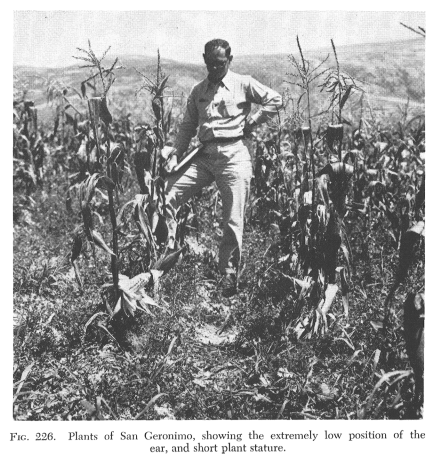The core set of the Races of Maize volumes were a result of investigations by Maize Geneticists and were published by the National Research Council, National Academy of Sciences between 1952 and 1963. The set represents a unique source of information, which characterizes and describes the races of maize and their respective geographic origins. These volumes have been out of print and unavailable to researchers for decades. The Maize Crop Germplasm Committee (CGC) recognized the importance of the availability of this scientific literature and recommended that they be electronically reproduced and distributed via the National Academy Press, Washington, D.C.
And a great idea that is too. I was given a nice CD-ROM by Dr Candy Gardener of the USDA genebank in Ames, Iowa. But you can also access the PDFs online. It’s a real treasure-trove. Happy browsing!

Truly an interesting collection. Does this information have any bearing on the disclosure of origin controversies currently going on? Thanks for bringing this to my attention.
I have no idea what those controversies might be, but perhaps someone out there does, and hopefully will comment.
The controversy was present during Nagoya negotiations. It is ongoing at WIPO now. Check out: http://www.wipo.int/edocs/mdocs/tk/en/wipo_grtkf_ic_28/wipo_grtkf_ic_28_4.pdf
Tom: No hope here. The bracketed text says:”[Country of Origin
“Country of origin” is the [first] country which possesses genetic resources in in-situ conditions.]”. There are also problems with “Providing Country” usage. Developing countries – at least in Latin America and Africa – have an average of two thirds of their crop production from crops originating in other continents. They are going to starve if they continue with this more-than-twenty year old empty debate (based perhaps on the false notion that `indigenous crops are better’).